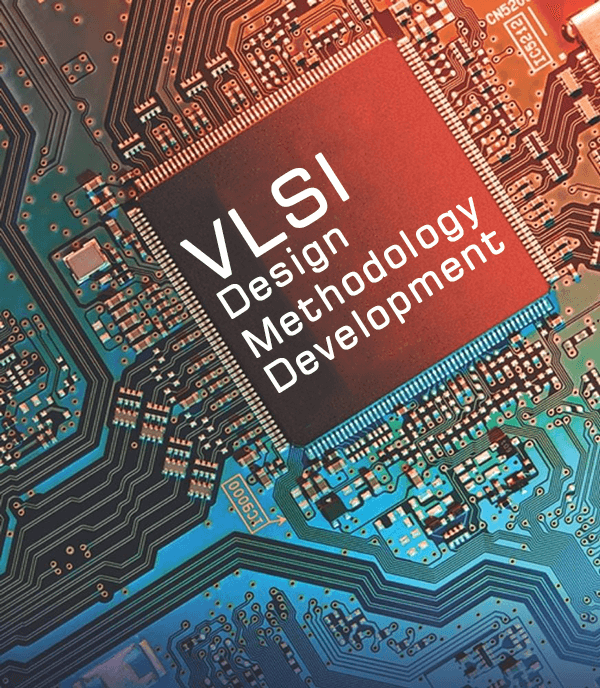What is the full form of VLSI
VLSI: Very Large Scale Integration
VLSI Stands for Very Large Scale Integration. VLSI is the method used to create integrated circuits (ICs) by packing thousands of transistors onto a single chip. One of the most popular technologies for designing microchip processors, integrated circuits (ICs), and components are VLSI. A microchip, which had more than a few billion transistor gates as of 2012, was initially intended to sustain hundreds of thousands of them. Even though the size of the microchip has decreased over time, it still has the capacity to accommodate a staggering number of transistors. All of these transistors are impressively integrated. On its microchip dye, the first 1 MB RAM had more than a million transistors and was constructed using VLSI design techniques.

History And Evolution Of Very Large Scale Integration (VLSI)
- Microelectronics have undergone up to four generations of development in a period that is even shorter than the normal human lifespan.
- In the early 1960s, low-density fabrication techniques known as Small Scale Integration (SSI), with a maximum transistor count of roughly 10, were developed. In the late 1960s, when about 100 transistors could fit on a single chip, Medium Scale Integration quickly replaced this.
- In contrast to prior years when the military bore the majority of the burden, it was during this period that research costs started to fall and private companies began to compete. The first integrated circuit revolution was founded on transistor-transistor logic (TTL), which offered higher integration densities and outlasted earlier IC families like ECL.
- The creation of this family was the catalyst for the growth of industry behemoths like Texas Instruments, Fairchild, and National Semiconductors. The introduction of Large Scale Integration in the early 1970s saw the transistor count increase to roughly 1000 per chip.
- The era of Very Large Scale Integration, or VLSI, began in the middle of the 1980s when the number of transistors on a single chip had already surpassed 1000. Further titles of generations like ULSI are typically avoided, despite the fact that there have been several advancements and the number of transistors is continually increasing.
- Due to the same issues that had caused vacuum tubes to become ineffective at this time-power consumption and the restriction it imposed on the number of gates that could be fitted on a single die-TTL lost the war to the MOS family at this time.
- The first microprocessor, the Intel 4004 and 8080, were released in 1972 and 1974, respectively, ushering in the second phase of the Integrated Circuits revolution.
Key Features Of Very Large Scale Integration (VLSI)
- Before the development of VLSI technology, the majority of circuits had a narrow range of functions they could perform.
- An electrical circuit might be made up of a ROM, CPU, RAM, and additional glue logic.
- IC designers can incorporate all of the things into a single chip thanks to VLSI.
- So many chips and circuits can be built with it on a single mini-silicon chip.
- In the 1970s, complex semiconductor & communication techniques were created, which led to the creation of VLSI.
- Microprocessors include VLSI computers.
- The technologies known as large-scale integration (LSI), medium-scale integration (MSI), and small-scale integration (SSI) have been replaced by VLSI.
Very Large Scale Integration (VLSI) Design Flow
The design flow for VLSI IC circuits has a numbering system for the different design levels, and blocks represent the various design flow stages.
- First, there are the specifications, which provide an abstract description of the architecture, functionality, and interface of the digital IC circuit that will be created.
- The next step is to construct a behavioral description in order to examine the design in terms of functionality, performance, adherence to predetermined standards, and other requirements.
- HDLs are used for RTL description. To test functionality, this RTL description is mimicked. The use of EDA tools is required moving forward.
- Use of logic synthesis tools transforms the RTL description into a gate-level netlist. Described in terms of gates and the connections that connect them in a fashion that satisfies timing, power, and area requirements, a gate-level netlist is a representation of the circuit in terms of gates and connections between them.
- The process ends with the creation of a physical layout, which is checked before being sent for manufacture.
Advantages Of Very Large Scale Integration (VLSI) Technology
- Circuits with a smaller size as compared with others.
- A higher level of device efficiency in terms of cost making it cost-effective.
- Greater efficiency in terms of the operating speed of circuits.
- It has a lower power requirement than separate components.
- More reliable hardware.
- Less room is needed, which encourages miniaturization.
Design Process Of Very Large Scale Integration (VLSI)
VLSI IC design generally consists of two main stages or components:
1. Front-End Design:
Digital design utilizing a hardware description language, such as Verilog, System Verilog, and VHDL, is referred to as front-end design. Additionally, this step includes design verification through simulation and other types of verification. Designing, which begins with the gates and continues through design for testability, is also a part of the complete process.
2. Back-End Design:
Characterization and CMOS library design make up the back-end design. Physical design and fault simulation are also included.
|

 For Videos Join Our Youtube Channel: Join Now
For Videos Join Our Youtube Channel: Join Now










